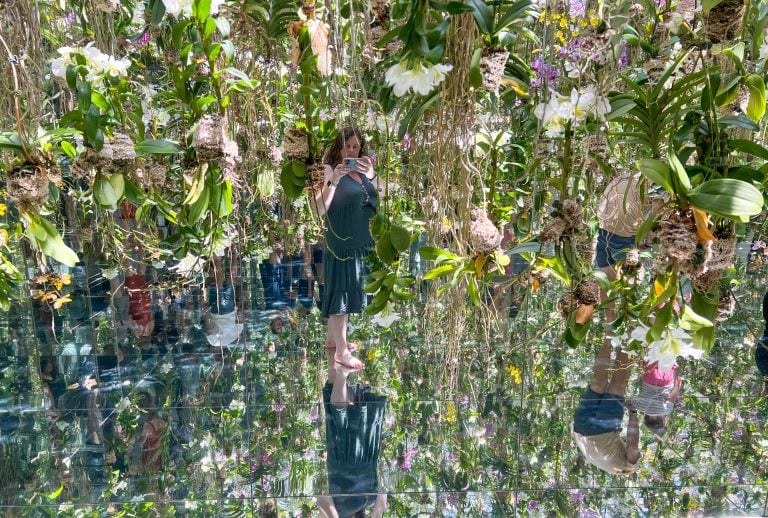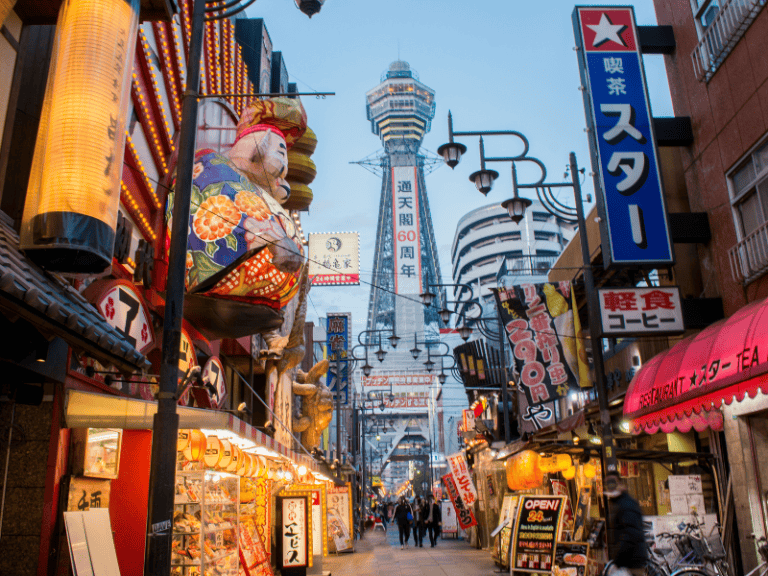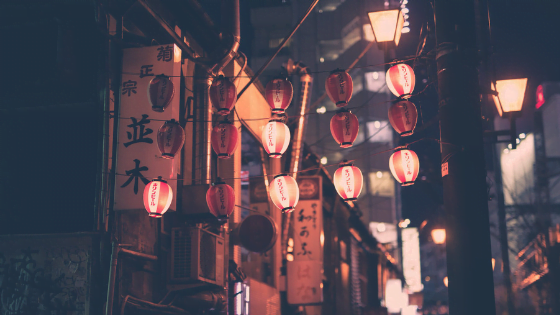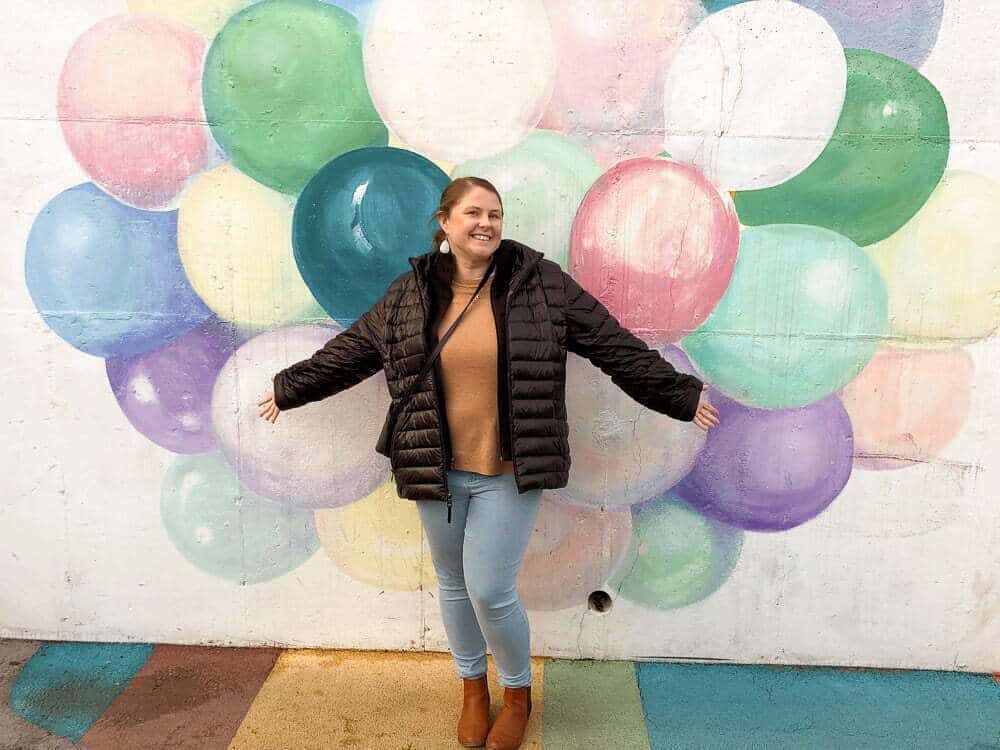The Best Places to Visit in Japan

Making a list of the best places to visit in Japan is a tricky thing to do, since Japan is one of my favourite countries to visit. I mean, that’s evident by the fact that I’ve been back four times in nine years. Each time I visit, I definitely see my old favourites, but I also try to go somewhere new or somewhere slightly away from the major stops on any Japanese itinerary like Tokyo and Kyoto.
Over my four years visiting Japan, I’ve been to many different areas that all had something amazing to offer. There’s still more to see, of course, but this post comprises a list of my favourite discoveries in the land of the rising sun so far. To make things easy for you, I’ve divided them by region to help you plan the ultimate Japan trip.
My list of the best places to visit in Japan
Best Places to visit on Honshu Island
Honshu is Japan’s largest island and is home to many of the country’s largest cities such as Tokyo, Osaka, Kyoto and Yokohama. The island is broken up into five main regions: the northern Tohoku region, the eastern Kanto region (home of Tokyo and Mt Fuji), the Chubu region, the south-central Kansai region (where Kyoto and Osaka are situated) and the western Chugoku region.
Hakone
Kanto region
A favourite spot for Japanese tourists, Hakone is famous for hot springs and a beautiful view across Lake Ashi to Mount Fuji. It’s not far from Tokyo, so could be done in a day trip, but it is a lovely area to relax and spend a night or two. Located in the Fuji-Hakone-Izu National Park in Kanagawa Prefecture, this beautiful area is full of woodland and babbling brooks.
I’d recommend a boat ride across Lake Ashi and then hopping on the Hakone Ropeway to see the sulfur pits in the active volcano valley of Owakudani, where you can also sample the famous black eggs. Hakone’s picturesque beauty makes it definitely one of the best places to visit in Japan.
Hakone has some beautiful accommodation options that feel both luxurious and traditional all at once. The Fujiya Hotel is a great option that has been operating since 1978 with beautiful forest views. If you’re strapped for time and wanting to do a day trip, you might be keen on an organised tour to make things easy!

Hiroshima
Kansai region
A beautiful city with a tragic history, Hiroshima is one of my favourite places in Japan. No trip to Hiroshima would be complete without a visit to the Hiroshima Peace Park, which is a moving and poignant tribute to those who were devastatingly affected by the atomic bomb dropped by the USA on the city to end World War Two. The Peace Park contains the A-Bomb Dome, which is the shell of a building that miraculously remained standing when the bomb was dropped. Also featured in the park is the beautiful pool with the arched cenotaph inscribed with all the names of the victims runing over the top of it and the heartbreaking Children’s Monument which is usually covered with origami cranes.
In the same complex is the Peace Museum which, amongst other things, contains a watch stopped at the exact time the bomb was dropped. I think it was this exhibit that really hit home for me. Despite its sadness, Hiroshima is now a thriving city again and one of the best places to visit in Japan.
Though definitely warranting a longer stay, many visitors come to Hiroshima on a day trip and combine it with nearby Miyajima. If that is your plan, then perhaps consider making the most of your time with a guided small group tour by a local that covers all the major sights across both destinations. If you’re keen to stay in Hiroshima, then Hotel Intergate in the downtown area of the city is a great choice with an onsite onsen.

Kamakura
Kanto region
Located only a short distance from Tokyo, Kamakura is a beautiful city in Kanagawa Prefecture. A trip to Kamakura will take about an hour and a half on the train from Tokyo, so it is possible to do as a day trip or an overnight stay. Kamakura is one of the best places to visit in Japan, particularly if you want an alternative city full of shinto shrines and temples to Kyoto.
This region is particularly famous for its giant statue of the Amida Buddha, which used to be housed in a building that was washed away by a tsunami. The Buddha, however, remained put and has been a drawcard to the region ever since. The peacefulness of Kamakura and the beautiful scenery definitely makes this one of the best places to visit in Japan.
If you’re planning on visiting Kamakura as a day trip from Tokyo, then you may want to consider a small group guided tour to ensure that you see all the major attractions. Ideally, one that is run by a local will be best to truly understand the history of the region.

Kanazawa
Chubu Region
Kanazawa deserves to be on many travelers’ bucket lists as it has a number of beautiful historical sites, an excellent food scene and a more relaxed atmosphere than other larger cities in Japan. It is easy to add Kanazawa to your itinerary since it is just a 2.5-hour Shinkansen ride from Tokyo and just two hours by train from Kyoto or Osaka.
Kenrokuen Garden, considered one of Japan’s top three landscape gardens, is the most famous attraction in Kanazawa. Its stunning seasonal beauty, with cherry blossoms in spring, lush greenery in summer, vibrant autumn leaves, and snow-covered landscapes in winter, makes it a must-see year-round. Other scenic spots in Kanazawa include Oyama Shrine which features a mix of Japanese, Chinese, and European styles in its architecture and Higashi Chaya, a preserved geisha district with traditional wooden teahouses that will remind you of Gion in Kyoto.
The city is also well known for its art and craftsmanship history. Kanazawa has a long tradition of gold leaf production, which visitors can explore firsthand through visiting the Kanazawa Gold Leaf Museum, taking workshops or sampling unique gold-leaf-covered treats like ice cream.
One of the highlights of visiting Kanazawa is undoubtedly exploring its food scene. Its proximity to the Sea of Japan means its seafood is incredibly fresh, and Omicho Market is a great place to sample sushi and sashimi. Compared to Tokyo or Osaka, you will find the food here a lot more affordable.
For easy access to key attractions in Kanazawa, you should stay in a central location near Kenrokuen Garden. The Hotel Sanraku Kanazawa is a very nice hotel with spacious rooms suitable for both couples and families.
Contributed by Sophie from Delightful Travel Notes

Kawagoe
Kanto Region
Kawagoe is never on travelers’ Japan bucket lists, and that’s a mystery to us. Not only is this town super cute and historical, but it’s also very easy to go to!
From Tokyo, which you will visit for sure, it’s only a 30-minute train ride from Ikebukuro station. Then, you can walk from the Kawagoe train station to the city center and wander in the streets.
Kawagoe is often referred to as a “Little Edo”, because it has a lot of architecture from that period of time. To see it, head to the warehouse district and the main street Kurazukuri no Machinami and pass by the time bell tower of Toki no Kane.
There are tons of sweet shops and restaurants, the other specialty of Kawagoe. The atmosphere is very pleasant and it’s easy to spend hours in these streets, trying out everything.
Since there are so many places to choose from, Soline from On the Road Diary has 3 recommendations for you. For lunch, head to Torisei. It is a magnificent traditional unagi restaurant where you sit directly on the floor, isolated from the rest of the customers for greater tranquillity, with a beautiful pond on the other side of the window.
Then, for an afternoon snack and fun footbath experience while eating, head to the back of the shop Kawagoe Tsubaki no Kura. Last but not least, the most famous street for sweet shops is Kashiya Yokocho.
One thing is for sure, you’ll go back to Tokyo with a full belly and lots of memories from this cute town! If you want to stay in town overnight, we recommend the Ryokan Matsumuraya.
Contributed by Soline from On the Road Diary

Koyasan
Kansai Region
As the birthplace of Shingon Buddhism, Koyasan is one of Japan’s most unique destinations, where travellers can stay in temple lodgings run by Buddhist monks. Situated atop Mount Koya in Japan’s Wakayama Prefecture, the small town is surrounded by thick forests and ancient temples and is just a two-hour train journey from Osaka.
For the full experience, spend at least one night in a temple stay. The lodgings, known as shukubo, offer a rare glimpse into monastic life. Guests sleep on traditional tatami bedding on the floor, dine on shojin ryori – traditional Buddhist vegetarian cuisine – and can even join the morning prayers. With over 50 temple stays to choose from, Eko-in comes highly recommended, and includes nighttime fire rituals alongside the typical offerings.
Be sure to visit Kongobu-ji, the head temple featuring one of Japan’s largest rock gardens. The main highlight in Koyasan, however, is the Okunoin Cemetery – Japan’s largest cemetery. A moss-covered pathway winds through towering cedar trees, leading to the mausoleum of Kobo Daishi. Visiting this site is a very spiritual and awe-inspiring experience.
The best time to visit Koyasan is between April and November. Due to the town’s high elevation, it gets very cold, so dress accordingly and bring a few extra layers.
Contributed by Tess from Tess Somewhere

Kyoto
Kansai Region
A staple on the Japan tourist trail, the wonderful city of Kyoto is undoubtedly one of the best places to visit in Japan. Because of this, it can grow exceptionally crowded, however, particularly around Sakura (Cherry Blossom) and the Autumn foliage seasons. The good news is, though, that Kyoto is beautiful at any time of year, so it is absolutely possible to go during the low season in winter (to avoid New Year crowds, go after 3rd January) and still get amazing photos. Kyoto is quintessential traditional Japan.
Wooden sliding doors with paper windows and lanterns line the cobble stone streets and if you’re lucky, you might spot the famous Kyoto geisha scuttling to their appointments inside the tea houses. The Geisha districts where I’ve had the most luck spotting these icons are Gion Higashi and Ponto-Cho, though there are five districts in Kyoto in total. It’s worth reminding that whilst spotting Geisha is exciting, that these are women going about their jobs, so respect them and don’t get in their way.
The beautiful Arashiyama Bamboo Grove is also a must see when staying in Kyoto, but do try to get there early in the morning to avoid the crowds as much as possible.
Kyoto is famous for temples and shrines, but honestly there are so many temples and shrines in Kyoto to visit that you’ll have to return again and again to see them all!
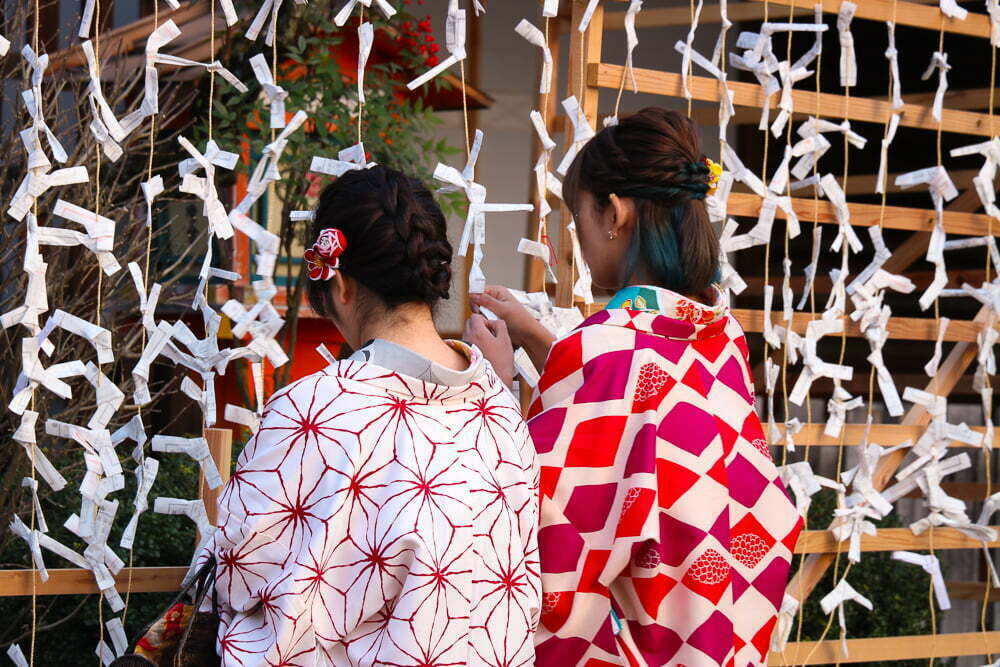
Miyajima
Kansai region
The famous ‘floating’ torii gate of Itsukushima Shrine located on the small Miyajima island is a sight to behold at high tide. The shrine itself is also built over water and is UNESCO World Heritage Listed. It’s easily accessible in under an hour from Hiroshima and is well worth the ferry ride out.
Miyajima was listed back in 1643 in scholar Hayashi Gaho’s Three Views of Japan, which indicates the island temple’s significance and beauty in Japanese history. Miyajima is famous not only for the shrine itself, but for the wild deer that roam the tourist trails. They’re totally friendly, although they’ll definitely pester you for food. Not only is Miyajima one of the best places to visit in Japan, it’s also one of the most iconic.

Nara
Kansai Region
Nara is located on Japan’s main island, Honshu, in the Kansai region and was the original capital of Japan – before Kyoto. It’s accessible on a day trip from Osaka or Kyoto, or on a longer stay depending on time. I visited Nara specifically because I wanted to view the famous Big Buddha in Todai-Ji – the largest bronze Buddha statue in the entire world – but there’s lots more to enjoy in Nara.
Like Miyajima, Nara is full of wild deer who are used to being fed by tourists, so beware if you have food in your pockets! The ancient monuments of Nara are UNESCO World Heritage listed and are some of the oldest in Japan. They include Horyuji, which is the world’s oldest wooden building and the beautiful Kasuga Taisha. For me, playing with the deer, alone, makes this one of the best places to visit in Japan.

Nikko
Kanto region
Nikko is located in the mountainous region of Tochigi in Japan, about two and a half hours on the train from Tokyo. It’s a beautiful, vast city with breathtaking natural sites and traditional architecture. By far and away, the most visited site in Nikko is the incredible Toshogu shrine, which is intricately carved and painted. In the Nikko National Park, there are cute wild monkeys (although be careful not to get bitten) and rushing rivers through beautiful gorges.
The perfect Instagram spot would have to be the sacred red Shinkyo bridge which leads to all the Nikko shrines – it’s truly picturesque and worthy of five minutes of reflection, I travelled to Nikko on a day trip, but it was a looooong day, so I’d recommend an overnight stay if you don’t feel up to five hours return train travel in a day. The Nikko Kanaya Hotel is a lovely historic western-style option that is very close to the sights and has a free shuttle bus to/from the Tobu Nikko Station. If you prefer traditional Japanese ryokan accommodation then the Nikko Senhime Monogatari is the ideal spot to test out sleeping on a futon for the night.

Osaka
Kansai region
Located in the Kansai region along with neighbouring cities Kyoto and Nara, Osaka has become a favourite with tourists doing a standard 10 day Japan itinerary: Tokyo, Kyoto, Osaka. The city is located on a harbour and has a funky and fresh nightlife, particularly in the busy Dotonbori area. Undoubtedly, the most famous sight to visit in Osaka is the Osaka Castle and surrounding park, which really is stunning to look at.
Personally, I’m a massive fan of wandering the many markets, arcades and eateries in the Dotonbori area, which is a long stretch of pedestrian street featuring enormous moving crabs, street food vendors selling octopus balls (an Osaka special) and yakitori restaurants. Osaka is also one of the best places in Japan to visit with kids – there are so many things for kiddos to do in Osaka – and families will especially love the fabulous Osaka Kids Plaza.
Osaka is also a great jumping off point to do day trips to many of the region’s great destinations. If you’re happy doing day trips to Nara, Hiroshima and Kyoto, then basing yourself in Osaka is an option – although I’d strongly recommend staying several nights in Kyoto to experience the lantern-lit alleys in the dark. After a few stays in Osaka, I have to say my favourite hotel experience in the city has been at the Swissotel Nankai which was truly fabulous both in terms of location and service.

Takayama
Chubu region
With its streetscape of wooden buildings, cute retro museum, and a multitude of interesting shrines to explore, Takayama offers similar delights to Kyoto – with fewer crowds. The highlight is wandering around the old town where shops, sake breweries and restaurants hide behind slatted wooden buildings – but that’s not all there is to do. The town has two ‘showa era’ museums with video games, gadgets and posters of days gone by. And don’t miss the Sakurayama Nikkokan, tucked behind the Sakurayama Hachiman shrine. It’s full of tiny carved models of Nikko created by a local carpenter, and while it doesn’t appear many town guides, it’s a delight.
The big food draw in Takayama is Hida beef, you’ll find skewers, croquettes and speciality restaurants throughout town with it on the menu. But also take time to stop by the tiny okonomiyaki place, Toranoya, where the elderly owner, pristine apron and perfect lipstick in place will whip you up a fantastic yaki soba. While you can visit Takayama in a day, ideally, stay overnight, which allows you to visit the main centre once the tour buses have departed – the light is beautiful at sunset. The Rickshaw Inn is a moderately priced ryokan, or Hotel Wing International, which offers more Western comforts and an onsite onsen. Staying longer also allows you to visit the nearby small town of Hida Furukawa, where koi carp swim in the streets.
Contributed by Helen from Japlanease.com

Tokyo
Kanto region
Who could forget the jewel in Japan’s crown, the capital, Tokyo? Tokyo, to me, is the New York of Asia: the city never sleeps and it’s bustling, varied and vibrant. Each district in Tokyo is slightly different, from the traditional neighbourhood of Asakusa to the scramble crossing of Shibuya. I’ve been to Tokyo six times and I’m still yet to feel like I’ve seen it all. For accommodation, I recommend you stay around any of the Shinjuku, Ginza, Shibuya or Tokyo Station districts but the public transport in this city will keep you connected no matter where you choose to stay. My most recent stay was at the Ascott Maranouchi, which I have to say is one of the loveliest hotel stays I’ve had around the world and located right on top of a train station for extra convenience.
It’s a huge urban city that truly has something for everyone. It’s an absolute must-visit for first timers to Japan in order to experience that traditional meets modern juxtaposition so evident in Japan. Because it’s just so hard to pinpoint a handful of activities to do in Tokyo, I created an Ultimate Tokyo Guide for the best things to do and see in the city. Travellers with kids will absolutely adore visiting places like the Tokyo Toy Museum and Tokyo Disney and art lovers of all ages will want to visit the immersive installation teamLab Planets near Tokyo Bay.

Best places to visit in the Shikoku region
Matsuyama
Matsuyama is an absolute undiscovered gem in Japan that not a lot of international tourists have discovered yet. It’s the capital of Ehime Prefecture and is on the island of Shikoku, so flying or travelling by boat are your options to visit. Matsuyama does have an airport and with the rise of low-cost carriers in Japan, it’s pretty cheap to get there by plane. Matsuyama has an incredible castle, which I think is personally the best castle to visit in Japan. I found it more impressive than Nijo Castle in Kyoto or the iconic Osaka castle with a huge expansive area to walk around and discover.
Matsuyama is also home to Japan’s oldest indoor onsen, Dogo Onsen, which has been around since 1894. There are a number of traditional Japanese guest houses (ryokan) in Matsuyama to complete your stay. Fewer people speak English here than in main centres like Tokyo and Kyoto, so be prepared to learn a few Japanese phrases and hope for the best when ordering food! If you’re willing to brave it, though, you’ll discover one of the best places to visit in Japan.
The ANA Crowne Plaza is a perfect western-style accommodation option in Matsuyama and is located right in the centre of town. Matsuyama is a brilliant spot to try out a traditional Japanese ryokan, however, so consider booking the lovely Yamatoya Besso if you’re looking for an unique stay.

Naoshima
Naoshima is one of almost 3,000 islands that dot Japan’s Seto Inland Sea. Easily reached by regular ferry services from the mainland, Naoshima is home to several major art museums as well as world-famous public art.
At the top of most visitor’s Naoshima itinerary is a photo of the giant Yellow Pumpkin, the island’s most famous landmark. Sitting at the end of a pier and overlooking the Seto Inland Sea, the artwork was created by the Japanese artist Yayoi Kusama. Kusama also created the enormous red pumpkin that stands next to Naoshima’s ferry port. Also near the port is Naoshima Public Bath I Love Yu, probably the most unique and spectacular onsen in Japan.
On the south of the island are a cluster of three beautifully-designed art museums, the Benesse House Museum, the Chichu Art Museum, and the Lee Ufan Museum. Each museum hosts a collection of playful and often thought-provoking modern art as well as beautiful grounds and gardens. Many of Naoshima’s traditional homes have found a new lease of life as galleries.. Called Art House Projects, each house has been used as a backdrop for big and bold modern artworks created by famous artists.
It’s best to spend at least one night on Naoshima, mainly due to the time it takes to get to the island, and how spread out many of its main attractions are. One of the best places to stay on the island is the stylish and modern MY LODGE Naoshima, which has wonderful sea views, especially at sunset.
Contributed by James from Where You’re Between

Best places to visit in the Kyushu region
Beppu
Beppu is the onsen centre of Japan located in Oita Prefecture with a huge number of natural hot springs. Onsen in Japan is traditionally done nude, so if you’re feeling a little self conscious, it might be recommended to try and get a hotel with a private onsen, rather than brave the crowds. I’ve done both, and whilst I didn’t mind the public onsen, I can tell you that when you’re a larger sized caucasian women surrounded by tiny Japanese ladies, the experience can be a little daunting at first.
Beppu is also famous for the Jigoku (Hells) of Beppu which are a number of hot springs including a geyser, a bubbling pool of grey mud and a steaming aqua lagoon. Note, these hot springs are NOT for bathing – one even has crocodiles living in it. Beppu makes the list of the best places to visit in Japan for its amazing hot springs, but also its quirkiness.
Since you’re in the home of the Japanese onsen, treat yourself with a stay at the Amane Resort GAHAMA which has onsen looking out over the ocean. It’s so lovely, you’ll never want to leave the hotel!

Okinawa Island
Okinawa is one of the more underrated prefectures in Japan. Many visitors come to Japan to see the city of Tokyo or explore the ancient streets of Kyoto, but so many miss out on the opportunity to see a completely different side of Japan.
Okinawa is a tropical island with its own unique culture, history, and food. Okinawa is known for its beautiful beaches, world-class diving locations, and laidback atmosphere.
Okinawa is reachable by flying into Naha International Airport. From here, many visitors will head to northern Okinawa to stay at one of the many resorts. The Busena Terrace, Halekulani Okinawa, and Hiyori Ocean Resort are some of the more popular resorts to stay at.
What makes Okinawa so special is the food. You can find all the great cuisine you find on mainland Japan here but Okinawa has its own special dishes like Okinawa Soba, Taco Rice, and Goya Champuru. It is recommended to find a local Izakaya as they prepare some of the best local dishes on the island.
For being an island, there is so much to do and see in Okinawa. You can spend a day in Naha and shop along Kokusai-dori or visit Shuri Castle or head north to hike and explore Yanbaru National Park. You can’t visit Okinawa without getting in the water. Okinawa has some of the best dive sites and snorkel locations in the world. The best part about Okinawa is that you can visit at any time of the year.
Contributed by Brandon from Zimmin Around the World

Best places to visit in the Hokkaido region
Sapporo
Northern Japan’s capital, Sapporo, is located on the island of Hokkaido, famous for its snow festival, snow monkeys and powder-like ski slopes. I visited in the beginning of the summer months, so while the rest of Japan was humid and sweltering, I was enjoying temperatures in the high teens – perfect for wandering around. I actually visited for a work trip, but had 24 hours to explore before kicking off the project I was working on.
The Sapporo Beer Museum is a great place to visit if you’re a beer fan and beer tastings are cheap following your visit to the museum. Odori Park is perfect on a sunny day to sit and relax. When the sun is out, street food and beer vendors come out to peddle their wares and it’s a wonderful feeling to sit amongst the sun and flowers with a beer in hand. For great views, a trip out to Mt Moiwa and the Mt Moiwa Ropeway is definitely worth the travel time and if you’re short on hours, then head to the JR Station building and visit the observation deck.
A great accommodation option in Sapporo is the Daiwa Roynet Hotel Sapporo Nakajima Koen, close to Odori Park and rail transport.

In summary: where are the best places to go in Japan?
Japan offers a captivating blend of ancient traditions and modern wonders, making it a dream destination for travelers. From the serene temples of Kyoto to the vibrant streets of Tokyo, the tropical vibes of Okinawa and the natural beauty of Hokkaido’s landscapes, there’s something for every type of explorer. Whether you’re seeking culture, adventure, or relaxation, Japan’s diverse attractions promise an unforgettable journey. Start planning your trip and immerse yourself in all that this fascinating country has to offer!
FAQs – things you need to know before you visit Japan
When is the best time to visit Japan?
Japan is brilliant at any time of year, but the country definitely experiences the four seasons in full. Summer (June – August) is hot and humid, so might not be best for exploring the large cities – but may be perfect for a tropical holiday on Okinawa. Autumn (September – November) is a fabulous time to visit as the weather cools down and in November the red Japanese maple leaves make places like Kyoto look utterly stunning. Winter (December – February) is icy cold and ideal for snow sports on northern Hokkaido. Winter is also a great option to avoid the crowds in the Japanese cities. Finally, Spring (March – May) is Japan’s most famous season as in April the cherry blossoms come out and tourism is at its peak.
How much time should I spend in Japan?
Honestly, it depends wholly on what you’d like to do. A typical first-time itinerary is around 10 days and would include something like 4 days in Tokyo, 3 days in Kyoto and 3 days in Osaka with a day trip to Hiroshima from Osaka. This is a really simple itinerary because all these destinations are easily accessible via train. But of course, there’s much more to see further afield if you have more time.
How to get around in Japan?
Japanese trains are second to none and that is how I would recommend you do most of your travel. If you’re planning on using trains between major cities then consider a JR Pass which is a tourist scheme designed to provide all inclusive Japan Rail travel to visitors. The pass will include Shinkansen (bullet train) travel between cities such as Tokyo, Kyoto and Osaka and will also allow you to use local JR trains within the cities. Note that the private subway system in most cities is not eligible for the JR pass and tickets need to be purchased separately.
Is Japan expensive to visit?
At the time of writing, the Japanese Yen is fairly weak so expenses on the ground in Japan are very reasonable. Accommodation in major cities and Japan Rail Passes remain expensive. I’d suggest budgeting around 11,000 JPY to 20,000 JPY per day (depending on your travel preferences).
Do I need to speak Japanese to visit Japan?
Whilst it is always polite to learn a few words of the local language, if you are visiting the major cities then you’ll be able to find locals who speak some English. In the more regional destinations, there will be less English ability, so be prepared to try and communicate in other ways – even learning words like “ku de sai” (please), “arigato gozaimasu” (thank you) and “sumimasen” (excuse me or sorry) will help you with the locals.
Like this post on the best places to visit in Japan?
Pin it so you don’t lose it!







